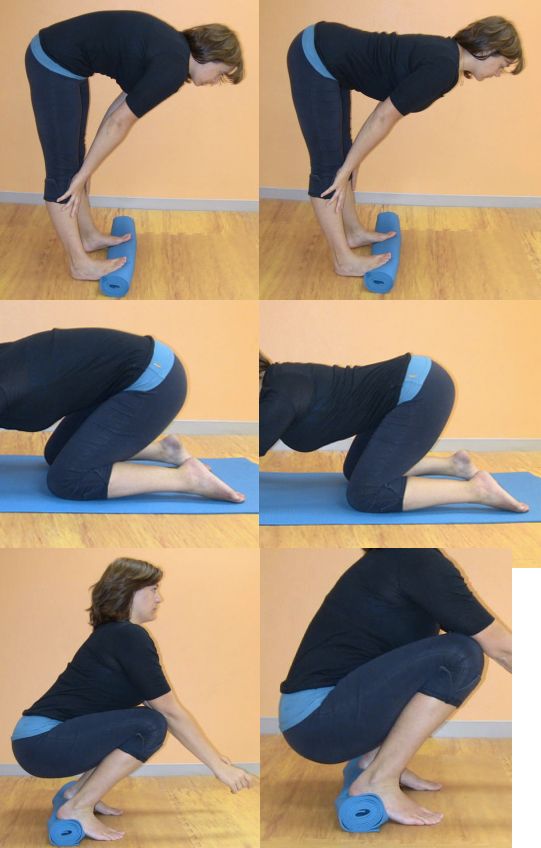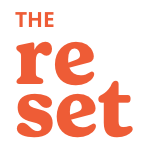
Don’t wait until you’re peeing yourself post-baby… or even cruising the adult incontinence aisle in your 50s. Lengthen & strengthen your pelvic floor & activate your deep core with these 6 everyday practices, plus 3 essential strengthening moves.
If you’re pregnant, postpartum, an avid exerciser or athlete, or even if you’re none of these things currently, if you have a pelvis (hint: you do) you need to understand how to align & use it.
Chances are you’ve spent much of your life sitting: sitting in a desk at school, commuting seated in a car, sitting at work and lounging on the couch in the evening. You’ve probably learned like many women to “suck in your tummy” and “tuck your butt under” to appear slimmer and “work your core.”
I remember reading once in an interview with a ballet dancer that the trick to sleek abs was not strength training per se, but simply “holding in your abs all day long.” Good grief.
It’s no wonder so many of us are poorly aligned with a tight, short pelvic floor and glutes (those are your butt muscles). If you’re pregnant or postpartum and peeing yourself, think of the baby as the straw that broke the camel’s back. Peeing yourself while pregnant can make for some funny in-class jokes at BB, but the truth is, peeing yourself — officially known as urinary incontinence — is not “normal.”
See a Pelvic Health Physiotherapist if you are experiencing any of the following:
- urinary incontinence (with impact or when you sneeze/laugh, or simply difficulty “holding it”)
- pain in your pubic bone, lower back, and/or general pelvic area
- a feeling of strain or heaviness in your pelvis
- a feeling as if something is “hanging” in the vaginal canal
- any of the symptoms of a Diastasis Rectus Abdominus (abdominal separation), which often appears in postpartum concurrent with pelvic floor dysfunction
WANT TO NOT PEE YOURSELF?
OK, so not all of us wet our pants once we become mamas. Even if you’re back to running post-babe and feeling great, you need this checklist if you want a more injury-proof body and strong core.
1. Untuck your butt. Sit, stand and squat with a neutral pelvis, which means your hips are under your ribs and your tailbone is untucked, pointing back/down. Here’s a great post with visuals to help you understand & practise untucking your butt.

Tucked vs. Untucked Pelvis: nutritiousmovement.com
2. Learn/re-learn how to breathe. Babies do it properly. Us? Not so much. The video below will show you how breathing affects your pelvic floor and core, maybe more than any other thing you do.
3. Walk. Walk your errands, walk for exercise, walk with your little ones. Walk as much as you can, and maintain that untucked butt and ribs-over-hips posture while you walk.
4. Avoid exercising at a speed or intensity that forces you into bad alignment. Slow down and be mindful.
5. Safely mobilize and strengthen the muscles of your legs, core, and upper body with exercises that move you through a full range of motion and strengthen the postural muscles & align your spine & pelvis. If you are seeing a physiotherapist, ask her which exercises are best and which you should avoid. A BB personal trainer can help you to design a personalized home workout program, or you can join one of our fun, core-safe BB classes in pregnancy and postpartum.
6. Devote some time — optimally, each day — to target the deep core & pelvic floor with retraining exercises like the 3 go-to moves below. When you’re free of symptoms and can execute these moves perfectly, you can move onto more complex core moves. Breathing + walking + mindfulness, on the other hand, should become a lifelong habit. The pelvic floor is like any other muscle: use it or lose it!
PELVIC FLOOR & CORE WORKOUT
WANT MORE VARIETY? THIS POST-BABY VIDEO HAS 5 MOVES TO MASTER YOUR CORE & PELVIC FLOOR.
Belly Bootcamp is proud to produce a series of exercise videos in partnership with Canada’s foremost magazine for parents, Today’s Parent. Watch for more videos in this series!
